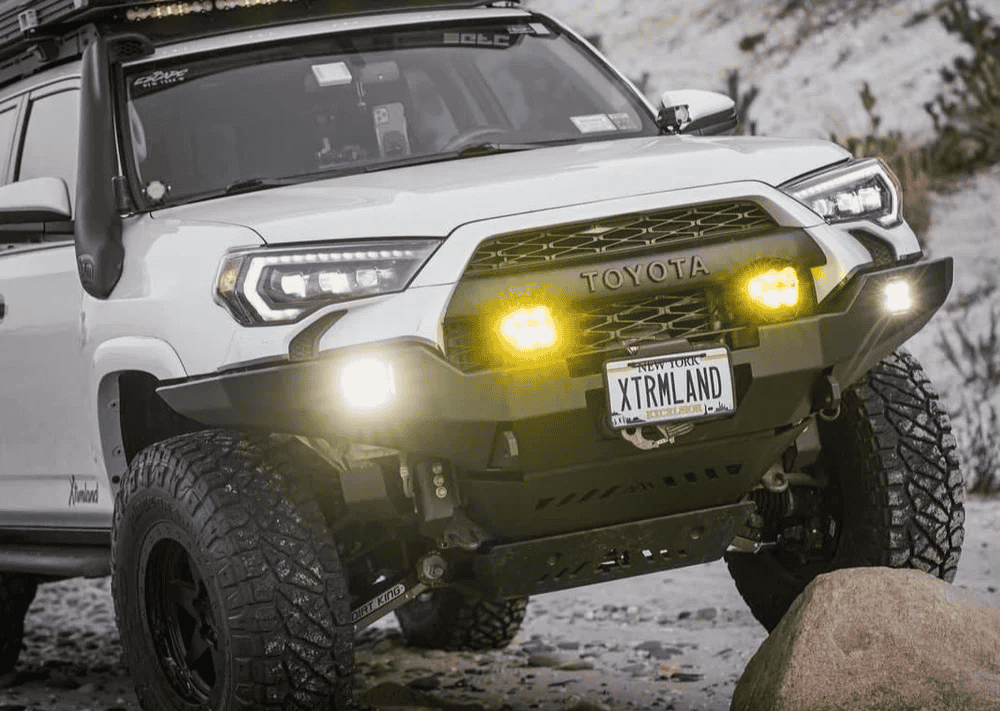Overland Vehicles

A rugged travel vehicle is defined by function under stress, not by stickers on the tailgate. It begins with a platform that can carry real payload without squatting, a suspension that controls weight on rough surfaces, and ground clearance that preserves approach, breakover, and departure angles. Protection matters too, from skid plates to rock sliders to radiator and tank guards that prevent small hits from ending a trip. Matching the drivetrain to the terrain is essential, whether that is selectable four wheel drive, a rear locker, or smart traction control that can modulate wheelspin. Pair these fundamentals with reliable cooling and braking, and you have the bones of a machine that stays composed when the map turns from lines to dots.
Clearance is not just about tall stance. It is about angles that keep the front end from digging in on steeps, the belly from hanging on crests, and the rear from dragging when you drop off an obstacle. Suspension travel allows tires to stay in contact as the surface changes, which keeps traction steady. Underbody protection acts as a second chance when terrain surprises you.
A rugged setup favors predictable traction. Low range gearing eases control at crawl speeds. Locking differentials or advanced traction systems help avoid momentum based driving that risks damage. Smooth throttle mapping further protects the driveline and gives the driver precise control on slick rock, packed snow, or deep sand.
Tires are the only part touching the earth, so choose load ratings that match your build and tread patterns that fit your climate. All terrain designs balance highway manners with off pavement grip. Sidewall strength resists punctures and adds stability at full weight. Carry a full size spare and know your jack points.
A rugged travel vehicle should serve as a small, efficient habitat. Power, water, and climate planning prevent small discomforts from turning into big decisions. An electrical system can combine a house battery bank, a smart charger, and a solar array sized to your loads. Keep wiring protected, fused correctly, and accessible for service. Water management favors simple, modular tanks with secure mounts, food grade hoses, and filtration you can service in the field. Ventilation and heat help you sleep well, which supports good decisions on long days.
Begin with an energy audit. List the devices you want to run, their draw, and the hours of use. Size batteries for real daily use with a reserve buffer, then plan charging from alternator, shore, and solar. Use quality breakers and bus bars, maintain clean grounds, and route cables to avoid chafe.
Separate drinking water from utility water when possible. Simple gravity feeds and quick disconnects reduce failure points. For climate, balance insulation, airflow, and condensation control. A compact heater and managed ventilation can keep the cabin dry during shoulder seasons.
Weight should ride low and centered. Pack heavy spares near the axle line and avoid tail heavy loads. Use tie down points that anchor into structure, not thin panels. Secure every item that could become a projectile if you brake hard on washboard.
Smart navigation and communication tools reduce risk. Offline maps, a reliable satellite communicator, and clear paper backups give you options if devices fail. Recovery gear should match your vehicle weight and be staged for quick use. Daily livability covers sleep, cooking, and hygiene in a way that keeps the cabin tidy and morale high. Little things like a place for wet boots or a blackout window solution can transform a trip.
Plan routes with realistic segment times and bail out points. Keep track of fuel range considering terrain and wind. Share your plan with a trusted contact and check in on a schedule if you travel solo.
Pack a rated tow strap, soft shackles, a shovel, traction boards, and a jack that works on uneven ground. Add tire repair, spare fluids, fuses, and basic hand tools. Practice using each item in a safe place before you need it for real.
Good sleep is a safety feature. A flat, supportive bed, quiet ventilation, and blackout solutions keep you fresh. A simple galley with safe cooking and fast cleanup helps you refuel without fuss.
When you are ready to turn a plan into a refined rig, browse our overland approach and see how purpose built choices translate to real trail days. Explore proven layouts and protection packages on our Overland Rigs page at Overland rigs. If you want help shaping the right suspension, power, and storage mix for your use case, review our Custom overland upfit options. Curious how we work and what to expect from first chat to handoff in Fayetteville, Arkansas? Read Why choose OZK Customs and see how we focus on durability, safety, and clean craftsmanship. Share your travel style, we will build a vehicle that handles rough roads with calm precision and feels like home when the day ends.
Turn your concept into a proven trail ready build. Share your timeline and must haves, and the OZK team will shape a dependable platform that fits how you travel. Book a consult to explore layouts, power systems, and protection packages built for real world terrain.
ADDRESS:
6159 E Huntsville Rd, Fayetteville, AR 72701
PHONE:
(479) 326-9200
EMAIL:
info@ozkvans.com